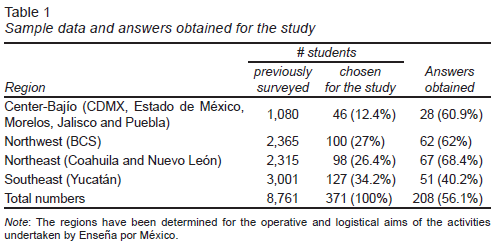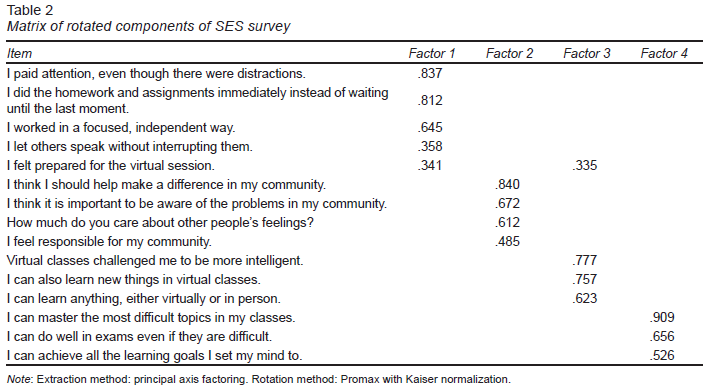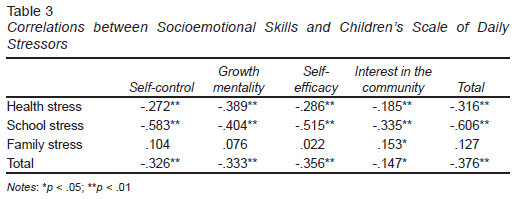Introduction
The year 2020 has seen enormous challenges due to the public health emergency caused by the novel coronavirus known as COVID-19. The health system has focused on providing medical care to the population and reducing the spread of the disease (Ramos, 2020). Due to this international emergency, there have been changes in the forms of interaction among the population. Various activities have been restricted to avoid an increase in the number of infections, such as recreational activities and work in offices and schools, which, in a context such as Mexico’s, poses a challenge for institutions and the population in general, since it is necessary to adapt to the new way of working, learn to use technological and communication tools, and develop skills that will allow people to continue interacting and developing as a society.
Lockdown can lead to an array of psychological consequences. According to Álvarez Zarzuelo (2020), specific needs have been detected in boys and girls who have been under lockdown because of the pandemic, including disorders such as anxiety, phobias, and possible difficulties relating to others. Various stressors, avoidance behaviors, frustration, and substance use have also been identified (Lorenzo Ruiz, Díaz Arcaño, & Zaldívar Pérez, 2020). It is therefore essential to have information that describes the emotional state, experiences, and challenges perceived by students to help them cope with them, and which will make it possible to develop interventions within the classroom designed to enhance socio-emotional skills while enriching academic knowledge.
The objective of this paper was to provide preliminary results on the diagnosis of the emotional state of Mexican students during the period of self-isolation and social distancing. Given the emphasis Enseña por México has placed on the development of Socio-emotional Skills within the classroom, it is assumed that students with a high level of this variable will experience lower stress levels. This diagnosis will allow the development of an intervention plan in which Enseña por México professionals (EMPs) will be able to strengthen the development of socio-emotional Skills within the classroom.
The first part of the study was designed to perform an Exploratory Factor Analysis of the SES survey, since adaptations were made to the scale to inquire about specific situations that may have occurred during the period of social distancing and to determine whether there is a relationship between SES and stress levels reported by students.
Method
Study design
Instrumental, descriptive, and transversal.
Participants
Two hundred and five students from the nine states where Enseña por México professionals (EPMs) collaborate (Baja California Sur, Mexico City, Coahuila, Estado de México, Jalisco, Morelos, Nuevo León, Puebla and Yucatán) with an age range of 12 to 19 years (M = 15.05; SD = 1.83).
The inclusion criteria for students were to have had an EMPs as a teacher in at least one subject for six months prior to the start of the health contingency and to be enrolled in a junior or senior high school. Sampling data were drawn from a census conducted between December 2019 and January 2020, using a random sample stratified by region with a 95% confidence level and a margin of error of 5%. Table 1 shows the students surveyed, the number selected for the study sample (expected responses), and the number of responses obtained. Questionnaires that were not fully answered were excluded.
Sites
To collect the data, students from the nine states where Enseña por México professionals collaborate with public schools at the junior and senior high school level were considered, although the battery was administered virtually through the QuestionPro® platform, and sent to them via email.
Measurements
For data collection, a battery of tests was administered consisting of a questionnaire on sociodemographic data (age, sex, and place of residence), a section with questions directly related to the COVID-19 pandemic (whether students had self-isolated, how they obtained information on the situation and what their family situation was like), the Spanish version of the CORE Districts Social Emotional Learning Surveys, the Socio-Emotional Skills Survey (SES), (Chacón & Peña, 2017), which was adapted to use language in keeping with the virtual conditions in which students performed their activities and the Children’s Daily Stress Inventory (CDSI) validated for children and adolescents with a Cronbach’s alpha coefficient of .80 (Hernández, 2018).
Procedure
Based on official attendance lists, a representative sample of each group was randomly chosen, and an invitation sent to students through the EMPs who had been assigned to them for the school year. Students were sent the objective of the study and an informed consent form in writing together with a link to answer the battery if they decided to participate, which was open during the second and third week of June. The average time they took to answer all the questions was 18 minutes.
Statistical analyses
Frequencies and percentages were obtained for the sociodemographic data and means and standard deviations for the continuous variables. An Exploratory Factor Analysis was conducted to verify the relevance of the adaptations made to the SES survey, for which Barlett’s sphericity test and the KMO sample adequacy measure were calculated. In the analysis, an extraction was made by principal axes and Promax rotation. In addition, Pearson’s correlation coefficient was calculated to determine whether there is a relationship between coping with stress and Socio-emotional Skills. The SPSS V.23 statistical package was used to perform these analyses.
Ethical considerations
This study was conducted in accordance with the ethical norms of psychological research (Sociedad Mexicana de Psicología, 2010), and the protocols and agreements established with the educational authorities with which Enseña por México collaborates were also observed (Acta ordinaria ExMCE001-2020). Subjects were informed about the objectives and implications of the study, voluntary participation, and the confidentiality of the information.
Results
Of the 205 students who participated, 53.2% were male and 46.8% female. The state with the highest representation of participants was Baja California Sur with 28.8%, followed by Nuevo León with 26.8% and Yucatán with 20.5%.
A total of 60.5% of students reported only leaving home for essential activities, while 6.8% continued to carry out their normal activities and routines. The remainder (32.7%) did not go out at all.
A total of 84.9% of the participants reported that they were able to continue with their school activities remotely, while 15.1% had connection problems, did not have access to the Internet or their own electronic equipment to do the activities or found it difficult to do the activities more independently. Those who did continue with their activities communicated through WhatsApp®, Facebook® groups, and video calls through Zoom®.
In the Exploratory Factor Analysis of the SES survey, the KMO index = .855 and in the Barlett’s test of sphericity (1122.880, gl = 105, p = .000), which were significant results. Through the extraction of the principal axes, items with less than .32 saturation were eliminated, resulting in 15 items distributed among four components that explain 51.71% of the sample variance.
Factor 1 corresponds to the socio-emotional ability of Self-control, factor 2 to Involvement with the community, and factor 3 to Growth mentality while factor 4 corresponds to Self-efficacy (Table 2).
The CDSI results indicated a medium level of stress experienced (M = 65.44; SD = 9.23). The inventory has three dimensions: stress in the health sphere (M = 17.22; SD = 5.03), school stress (M = 11.76; SD = 3.82), and family stress (M = 17.56; SD = 5.60).
The results of the correlation between SES and stress indicate that there is a statistically significant negative relationship between SES and stress in the health field (r = -.316, p <.01) and SES and school stress (r = -.606, p <.01). There was no correlation between SES and family stress. Table 3 details the correlations found between the two instruments.
Discussion and conclusion
The results made it possible to know the type of situations students faced due to the suspension of face-to-face activities at schools. One of the most frequently reported problems was the lack of access to Internet services and/or digital media, as a result of which many of them were unable to carry out their activities on a regular basis. In some cases, due to the suspension of in-person activities, they had no further contact with either the EMPs or any other teacher.
It is important to mention that, of the sample initially contemplated (n = 371), 43.9% were unable to participate in the study because they could not be contacted directly by the EMPs (38%) while others, when contacted, said that they were unable to answer the survey (5.9%).
The correlation results coincide with those of other authors (Edel Navarro, 2003; Estévez López, Martínez Ferrer, & Jiménez Gutiérrez, 2009) on the relationship between skilled social behaviors and lower stress levels. In this study, the results showed that those who scored higher on the SES scale had lower levels of school and health stressors. According to the scale, subjects did not experience difficulty concentrating or carrying out their academic activities and, in terms of their health, there were no stressors due to physical ailments or discomfort and their eating and sleeping habits had not altered.
Limitations of the study include the fact that little contact was found with the students with whom the EMPs collaborate (less than half of those normally taught by Enseña por México professionals). It is therefore necessary to expand the sample so that the intervention can be designed to meet the main needs of students and more information is available for the beginning of the next school year.
Since this is the first part of the study, interviews are currently being carried out with students and parents to learn more about the level of information on COVID-19, the dynamics between their family members and which aspects of online classes and activities were emphasized. At the same time, qualitative data will also be collected from Enseña por México professionals so that through their experience as teachers, they will be able to retrieve and give greater structure to the teaching-learning strategies they implemented during this period. Finally, all this information will be comprehensively analyzed to redesign the training programs for our professionals and enhance the emotional support and the development of SES for students.


